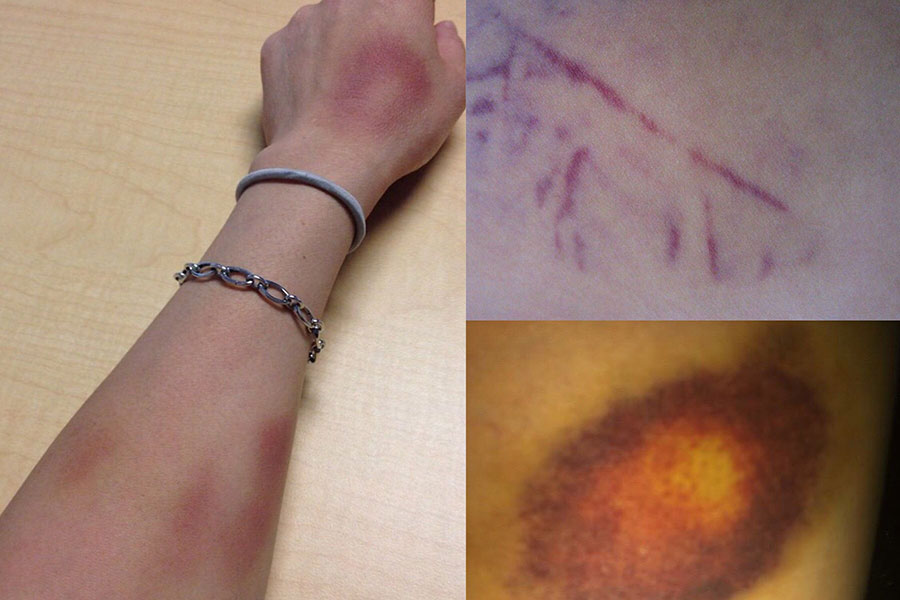What Affects the Appearance of a Bruise?
Bruising is one of the most common types of physical injury observed in victims of violence, assault, and abuse. There are several factors that affect a bruise’s appearance, such as:
- Tissue type
- Loose connective tissue type sites, such as the eye, face, and genitalia show more bruising.
- Fat content at the location of the injury
- The more fat, compared to muscle, can contribute to an increase in bleeding.
- Age of the victim
- Infants bruise easily because of their loose and delicate skin. The elderly bruise easily because they have decreased elasticity of the skin and blood vessels.
- The depth of the injury
- Superficial bruises may present immediately, while deep bruises may take hours or even several days to appear.
- Characteristics of the inflicting object, including its surface and force of impact against the body
- This affects the bruise’s size, shape and pattern of appearance.
What Does This Have to Do with Criminal Cases?
Forensic nurses and other health professionals are often asked by attorneys and law enforcement to assess injured victims and determine the approximate age of their injuries. Because bruises usually change color during the healing process, health professionals are often tempted to use color as a primary determinate in estimating the age of the injury and ascertain if it is consistent with a reported history. However, because several factors exist which affect the appearance of a bruise, current literature indicates there is little correlation between the color of a bruise alone and its actual age.
Many experts will go so far as to attempt to date a bruise as older or newer than another – and this too is invalid. Studies have shown that a bruise that is greenish-yellow on one part of the body may have occurred at the same time as another bruise that is blue. Therefore, it is important to have an expert review your case to determine if the pattern of the bruises is consistent with the allegations and dispute any attempts at dating the bruises.
References:
(Nash & Sheridan, 2007)
(Kostadinova-Petrova, Mitevska, & Janeska, 2017)
(Vanezis, 2001)
(Stephenson & Bialas, 1996)
Don’t miss our newsletter! Topics covered are:
Assault / Trauma
DUI / General Medical
Child & Elder Abuse / Neglect
Mental Health / Toxicology
Sign up here.











